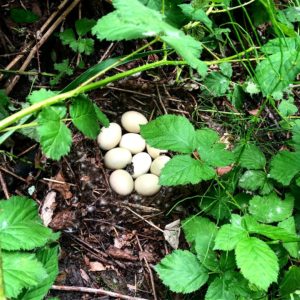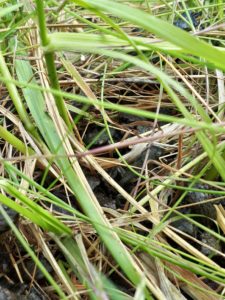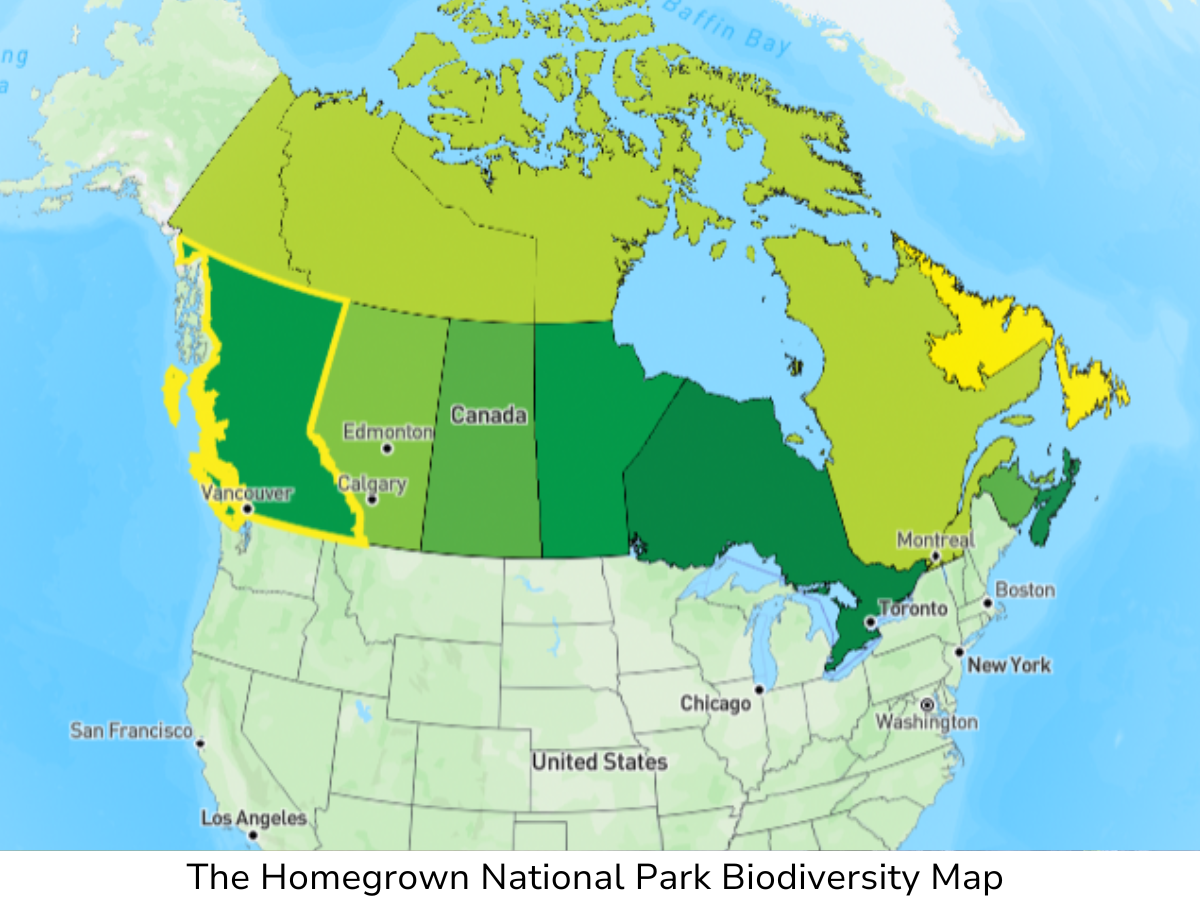.
.
Wildlife-friendly Garden Maintenance
.
It’s sunny, it’s warm, it’s spring! Have you been inspired to get out in the garden? Here are some simple ways you can ensure your yard maintenance is wildlife-friendly.
.
Pruning Trees & Shrubs.
 Before pruning a tree or shrub, it’s important to carefully check for nests to reduce the chances of destroying the homes of birds or small mammals, especially in March and April. Watch for nest-building or feeding activity, and listen for alarm calls from adults or begging calls from the young as you approach the site.
Before pruning a tree or shrub, it’s important to carefully check for nests to reduce the chances of destroying the homes of birds or small mammals, especially in March and April. Watch for nest-building or feeding activity, and listen for alarm calls from adults or begging calls from the young as you approach the site.
Remember to look high and low! Not all nests are in the branches of your trees. Ground nesting birds will build their nests among the thickets of your garden shrubs or blackberry bushes. If you find a nest, keep your distance, and wait until the babies have fully fledged before pruning back this area.
The best time to prune trees and shrubs in the winter. This way, you can be sure that you are not disturbing any nests, and your plants will thank you for the waiting until they their dormant season.
.
Lawn Care.
 Spring wildflowers – including dandelions and clover – are an important food source for our pollinators, like bees! Cutting your lawn in the early spring creates a pollinator dessert… Show your support for the bees by letting this important food source flower brightly in your yard all spring!
Spring wildflowers – including dandelions and clover – are an important food source for our pollinators, like bees! Cutting your lawn in the early spring creates a pollinator dessert… Show your support for the bees by letting this important food source flower brightly in your yard all spring!
Mowing and weed eating areas that have become overgrown can expose or harm baby animals – like bunnies and birds – to predators. Before mowing, make sure to walk your lawn to check for signs of nesting or hiding wildlife. When cutting your lawn, start in the middle and gradually move outwards in a circle so that animals can escape to safety.
If you have the space, consider creating temporary grass islands or prairie strips in your lawn as a part of your seasonal landscaping practice. You will enjoy the many grasses and other plants that you wouldn’t normally see flowering, while also providing a refuge and feeding source for insects, birds, and small mammals. Creating larger meadows encourages owls and other raptors to hunt.
If you live near a wetland, watch for juvenile amphibians migrating through your yard in the summer. Often they go unseen, but if you are lucky you might witness a mass migration of Western toadlets. Their migration period usually lasts about 2 weeks, and waiting to mow can save thousands of tiny lives.
.
Brush Piles & Leaves.
 Leave the leaves! Fallen leaves attract ground-feeding birds hunting for insects. Leaf litter that has persisted since fall may be home to overwintering butterfly pupae. Give them time to wake up and burst out as butterflies in the spring! Plus, decaying leaves are a natural (and free) fertilizer that add nutrients to your soil as they decompose.
Leave the leaves! Fallen leaves attract ground-feeding birds hunting for insects. Leaf litter that has persisted since fall may be home to overwintering butterfly pupae. Give them time to wake up and burst out as butterflies in the spring! Plus, decaying leaves are a natural (and free) fertilizer that add nutrients to your soil as they decompose.
Think twice about chipping or burning the brush piles you have created in your yard. Some wildlife seek out this type of dense and secure shelter that’s close to the ground. You might be surprised at the amount of wildlife a simple pile of sticks and leaves can attract. Salamanders, frogs & toads, rabbits and other small mammals, dragonflies and butterflies, and an abundance of bird species use this modest yet complex habitat feature.
(Northwestern salamander photo by Mike Pearson)
.
To learn more about native plant gardening to create habitat for wildlife, take a look at our Native Plant Gardening Guide:
Gardening with Native Plants in the lower Mainland and Fraser Valley!
.
Want to get wildife-friendly gardening tips right to your inbox? Sign up for our e-newsletter The Valley Steward!
.
.
.
.
.
.



